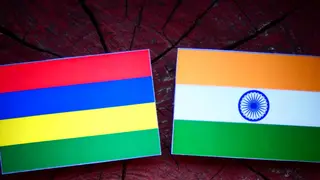With a population of 20,000, the district town of Champhai has a disproportionately large and thriving marketplace dotted with stores selling a wide range of household appliances, electrical wares, medicines, smartphones, footwear and others.
Located a mere 28 km from the border gates at Zokhawthar, Champhai is one of the largest trading centres after the state capital Aizwal, and caters to the needs of the hilly North-Eastern state of Mizoram and the bordering Chin State in Myanmar.
But the disturbing fact is that the hustle and bustle is almost entirely driven by illegal trade.
There are over 50 registered importers at Champhai, but only a few are active. Officially, trade is limited to import of a single consignment of betel nut a week, and a few parcels of Burmese energy drink. There is no trace of exports from India.
Hardly any trade takes place through Zokhawthar, according to Land Customs Station (LCS) chief V Hangzo.
All informal
There are nearly 15 major cross-border trading routes along the 510 km (according to the Home Ministry) unfenced border shared by Mizoram with Myanmar. Having shared the longest boundary, Champhai is the biggest draw of them all, says State export commissioner C Lal Zirliana.
No one dares to guess the size of the trade. There is not much information with the Commerce Ministry either.
But check any apparel, footwear or cigarette shops along the 200 kms stretch from Aizwal to Champhai – most of the offerings are from Myanmar. When compared to Indian products, they are significantly cheaper.
A pack of 20 king size Chinese ‘FarStar’ cigarettes is available at ₹40. A pack of 20 Winbody is ₹25. In comparison, a pack of 10 Flake cigarettes costs ₹50.
Consumer durables manufactured in Far Eastern countries like South Korea, China, and Malayasia are available freely. Be it an innocent tube light, spectacle frames or spares for the outdated Maruti-800 – the touch of Myanmar is all pervasive in the everyday life of a Mizo.
The ‘exports’ from India to Myanmar are no less impressive. Indian medicines, fertiliser (mostly urea), motorcycles, zarda , baby food, LPG, smartphones, mosquito repellents, pesticides, cycle parts, and solar gears fetch huge margins in Myanmar. The subsidised 14.2 kg LPG cylinders available to Indian consumers at less than ₹450 is lapped up by Burmese at ₹4000. One paracetamol tablet priced ₹1.5 or less in India fetches ₹5 at Tiddim in Myanmar. Tiddim, Falam and Kalemyo are the three largest consumption centres in Western Myanmar within 300 kms from the Champhai border.
According to K Lalminthanga, President of the Mizoram Chamber of Industries, at least two truckloads (each carrying 9-10 tonne cargo) of medicines (analgesics, skin ointments and antibiotics) and five truckloads of fertiliser reach Myanmar every week. Lalminthanga is one of the earliest entrepreneurs of Mizoram with family links in Myanmar.
Interestingly, while the official India-Myanmar border trade of $56 million (2014-15) is in favour of Myanmar ($39.86 million in Indian imports), Lalminthanga says informal trade is in favour of India due to export of relatively high value items. Zirliana, however, feels trade is evenly shared between the two nations.
But is it possible to ferry such huge volumes of goods across the border? Zirliana has an interesting anecdote to share. Like most of the Mizos he relations in Myanmar. On a recent visit to Kalemyo, he noticed an Indian-made JCB earthmover. “The traders drove it through,” he says.
Why no formal trade?
There are reasons behind the thriving cross-border trade.
Nearly 99 per cent of India’s official border trade with Myanmar is currently routed through Moreh in Manipur, located north of Mizoram. India has also invested heavily in building road infrastructure (Asian Highway) on both sides of the border on this route.
But trade ambitions are hurt by a couple of factors.
The road crosses disturbed areas in both in India (Manipur and Nagaland) and Myanmar (Sagaing division). Seventeen insurgent groups in Manipur and three to four in Nagaland are collecting nearly ₹50,000 in “tax” (read: extortion money) per truck, says Zirliana.
To avoid the hassle, traders are shifting interest in Mizoram that peaceful since the Mizo accord in 1986. The trade prospects have further brightened by the new found peace in Chin State and proximity of major consumption centres in Myanmar.
“Nearly 30 per cent of cross border trade is now routed through Mizoram,” says Lalminthanga.
According to the Mizoram Trade and Commerce Department, New Delhi noticed the strategic advantage during the 1994 border trade agreement with Myanmar and ordered setting up of the LCS at Zokhawthar. The facility was inaugurated in March this year after prolonged delay. But it was not enough to promote formal trade.
The road from Rih – located right across Zokhawthar – to Kalemyo is a single lane kuchha road. According to the State government publications, India promised to build a highway from Rih to Kalemyo via Tiddim and Falam in Myanmar, but the project is yet to take off.
“Trade pick up once the road projects that we are engaged in Myanmar are completed in the next 2-3 years,” says an Indian government official.
But, will that be sufficient to stop informal trade? More importantly, why informal trade flourish despite poor logistics? Neither Lalminthanga nor Zirliana has a convincing answer to the question.
The reason lies in the porosity of India-Myanmar border especially in Mizoram where the border practically ceases to exist. As per local rule, people of either country may travel 16 m inside the foreign territories between 5 am to 5 pm without any passport or visa. The district authorities say the limit was reduced from 40 kms in the past.
But that restriction is merely on paper. In reality they can go anywhere in Mizoram, and vice versa. According to a senior state official, at least 30,000 Burmese Chins are engaged in menial jobs in Aizwal. The movement is not one sided. Ask any Mizo, chances are, he has travelled deep inside the foreign territories. There is no fencing or Border Security Force (BSF) here.
The writer visited Mizoram as part of a field study organised by the Jadavpur Association of International Relations and Maulana Abul Kalam Azad Institute of Asian Studies.








Comments
Comments have to be in English, and in full sentences. They cannot be abusive or personal. Please abide by our community guidelines for posting your comments.
We have migrated to a new commenting platform. If you are already a registered user of TheHindu Businessline and logged in, you may continue to engage with our articles. If you do not have an account please register and login to post comments. Users can access their older comments by logging into their accounts on Vuukle.